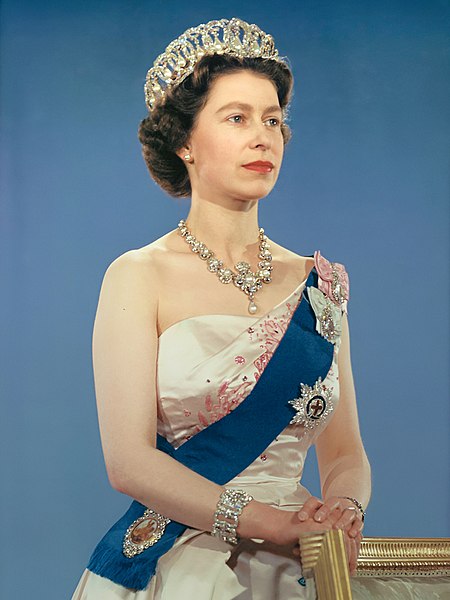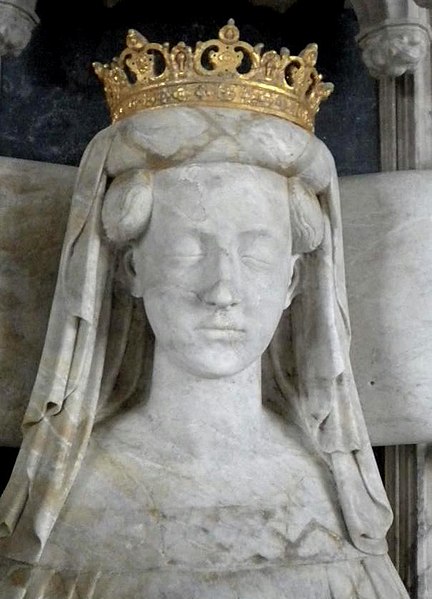A queen consort is the wife of a reigning king, and usually shares her spouse's social rank and status. She holds the feminine equivalent of the king's monarchical titles and may be crowned and anointed, but historically she does not formally share the king's political and military powers, unless on occasion acting as regent.
Anne of Bohemia and Hungary, consort of Ferdinand I, Holy Roman Emperor
Margaret I of Denmark (1353–1412), was first the consort of King Haakon of Norway and Sweden and later ruled Denmark, Norway and Sweden in her own right
Queen Sophia Magdalene wearing the crown of the Queen of Sweden.
Empress Nam Phương on her wedding day, 1934. Royal portrait by unknown Nguyen Dynasty photographer, taken as a wedding photo of Nam Phương and was widely used right after in French Indochina
A queen regnant is a female monarch, equivalent in rank, title and position to a king. She reigns suo jure over a realm known as a kingdom; as opposed to a queen consort, who is married to a reigning king; or a queen regent, who is the guardian of a child monarch and rules pro tempore in the child's stead or instead of her husband who is absent from the realm, be it de jure in sharing power or de facto in ruling alone. A queen regnant is sometimes called a woman king. A princess regnant is a female monarch who reigns suo jure over a principality; an empress regnant is a female monarch who reigns suo jure over an empire.
Queen Elizabeth II, who reigned as queen of the United Kingdom from 1952 until her death in 2022, is the longest-reigning queen regnant in world history.
Bust of Sobekneferu, the earliest Pharaoh of Egypt confidently proven to have been a woman (r. 18th/17th century BC)
Margaret I ruled Denmark, Norway and Sweden in the late 14th and early 15th centuries.







